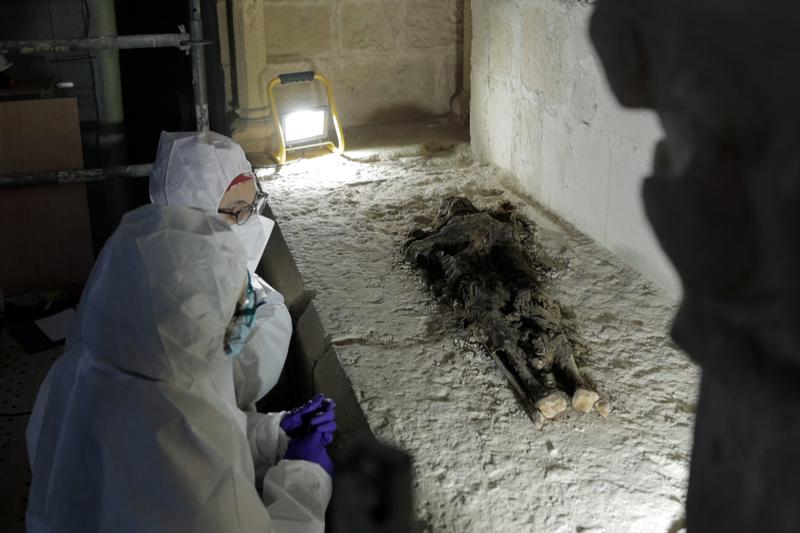Human remains of Catalan nobility found in Royal Monastery of Santes Creus
Dating back to the 13th and 14th centuries find considered 'exceptional'

A team of archaeologists and anthropologists has found the human remains of a dozen members of the Catalan nobility dating back to the 13th and 14th centuries in the Royal Monastery of Santes Creus, a Catalan cultural heritage site, located an hour southwest of Barcelona.
The discovery was made after the restoration of the ancient Gothic cloister began in April of 2023 and six sarcophagi were opened.
During a press conference on Monday, the team called the find “exceptional” as it shows a chronological and social class uniformity as well all the diversity of cases, the good state of preservation of bones and bone tissue, and textile remains.
The discovery will allow experts to study the biological and health profiles of the people and the conditions in which they lived.
A surprising discovery
According to the archaeologist Josep Maria Vila, the find was surprising, because “in principle, there shouldn’t be human remains in such good condition inside the sarcophagi, because they should have been looted.”
However, Vila pointed out that the human remains inside the coffins were preserved without being desecrated, adding that it is the first time such a find has been made in Catalonia:
“In no other site we have excavated have we found so many remains in such good condition,” he said, adding that the burial site at Santes Creus was left “as the monks had left it.”
Learning about the community
Anthropologist Tona Majó also expressed her excitement about the finding, which will allow her and other experts to “study the tombs which have first and last names engraved” and thus connect them with previous discoveries in the area.
According to Majó, the “exceptional nature of the find” has opened the doors to knowing the relationships between the people found in the same tomb, as well as their sex and what they ate,” among other things.
The coats of arms on the six tombs indicate that the human remains belong to members of the Cervelló, Cervera, Queralt, Puigvert, and Montcada families who belonged to the Catalan nobility of the 13th and 14th centuries.
The finding could also become a reference study on how social groups carried out burial rituals in the Middle Ages, added Carme Bagés from the Catalan Agency of Cultural Heritage under the Catalan Ministry of Culture.
Although the restoration of the Gothic cloister will not be complete until 2025, the Royal Monastery of Santes Creus remains open to visitors and offers guided tours.
Visitors can also follow the excavation, as cameras have been set up to broadcast the process live.